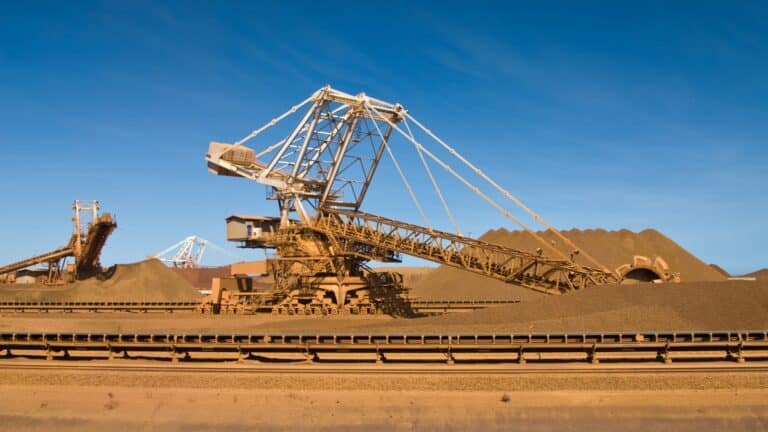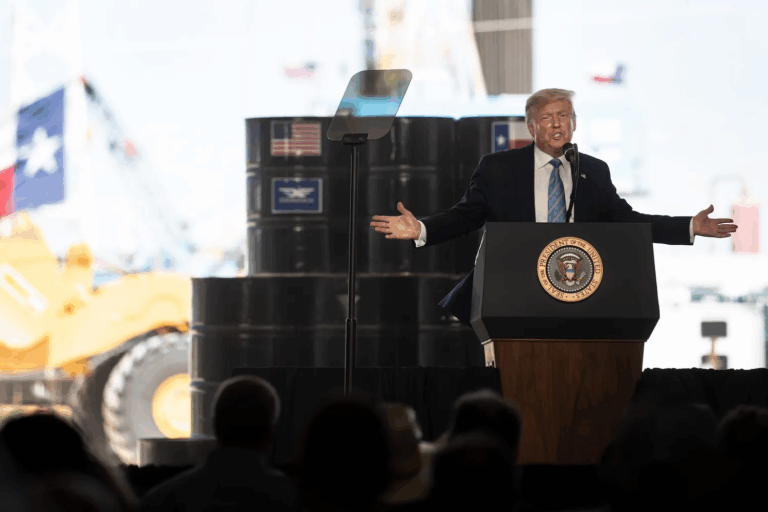Power prices are expected to soar under new tax cut and spending law
In states without policies to drive renewable energy, power prices could surge as federal tax incentives for clean energy disappear, according to Energy Innovation, a think tank.
Current Access Level “I” – ID Only: CUID holders, alumni, and approved guests only
Commentary by Richard Nephew • June 11, 2015
June 11, 2015
(The following blog post is an updated version of a May 4, 2015 post that takes into account developments in talks between the P5+1 and Iran since the original piece was issued. The original piece can be found here: http://energypolicy.columbia.edu/sanctions-blog-columbia-s-center-global…)
—
A few months ago, to help followers get a better reading on the process surrounding the final negotiations on a Joint Comprehensive Plan of Action (JCPOA), I put together a list of five key things to keep in mind about the talks and what is likely to emerge from them. I promised to update or add to them as needed, which I have now done to accommodate both the increased likelihood of negotiations continuing after June 30 and the signing into law of the Iran Nuclear Agreement Review Act of 2015 (INARA).
Just as we witnessed in March around the framework political agreement, we should not expect to know whether a final deal has been reached until June 30 at the earliest. More likely, it would be announced a few days thereafter and probably before the July 9th deadline to submit the agreement to the U.S. Congress under INARA for a thirty day review. Both for substantive reasons and the inherent need of both sides to demonstrate that they drove a hard bargain, it is highly unlikely that the final contours of the deal will be finished until late in the talks. Then, after the political settlement is reached, experts will need to render the decisions made by their bosses into text. This will take a considerable amount of time, particularly since this text – unlike the framework agreement’s Joint Statement or the November 2013 Joint Plan of Action (JPOA) – is expected to stand the test of time. Lawyers on all sides will be reviewing it carefully, as will technical experts from both the nuclear and sanctions fields. In short, though I’m sure US negotiators would like be home for the Fourth of July holiday, I suspect many of my colleagues will be spending it abroad for a second straight year.
This prediction has taken on additional credibility since my original post on May 4, with reports that negotiation over the text remains difficult. Though the July 9th deadline is important, the U.S. government will not sell out in order to achieve a shorter review period. After all, the only implication of slipping negotiations to July 10th and beyond is that an additional thirty days of review will be required for a total of sixty days. As such, it is entirely possible that negotiations will extend until the end of July, into August, and perhaps even into September if that’s what is needed to achieve a good deal. I’ve noted elsewhere that there is no crisis for the United States on July 1, if a deal is not reached. The same can be said of August 30, so long as the JPOA remains in effect and Iran’s nuclear program remains hobbled.
People can endlessly debate whether a glass is half full or half empty, and we should expect similar behavior from the Americans and Iranians if a deal is reached, just as we’ve seen in the past. Iran, for very obvious reasons, will emphasize the degree to which its nuclear program has been internationally accepted and how its advances will not be tempered by the deal. The Americans, again for obvious reasons, will say almost the polar opposite.
The issue of sanctions relief would likely play out in a similar fashion. Iran will probably get significant economic relief very early on, but only after the International Atomic Energy Agency (IAEA) verifies nuclear steps have been taken by Iran. Iran would likely note that this is because both sides must act at once (and that IAEA verification is the necessary action). The United States will argue that Iran acted first, prompting a positive US response.
The truth will be somewhere in the middle: Iran’s nuclear program will be constrained in very significant ways for significant amounts of time. Transparency into that program will continue long after the constraints end, and, in response, significant economic relief will be provided but only triggered upon Iranian completion of their specific steps. Exactly what those constraints are, how much transparency is afforded by the deal, and how sanctions relief will function will be contained in the document. Those seeking a real understanding of what was agreed would be well served to read it, rather than passing judgment based on comments from those senior officials who have axes to grind.
We do not know how long a period the participants will agree to for initial implementation of agreed terms or, indeed, what actions will be required over that time. However, as I have written about previously, it will take a few months, at a minimum, for Iran to execute the necessary changes to its nuclear program to permit sanctions relief to flow. Iran’s political leaders may argue differently but, assuming their technical people have any control over the agreed timeline, more time will be reserved for nuclear implementation to be done properly. Given the need stated above for both sides to be perceived as moving simultaneously, this will probably mean a slower start than some have speculated. A slower start will also result from the INARA’s review period. Iran may be prepared to start its nuclear modifications while sanctions relief is being prepared, but it is highly unlikely to start while the U.S. Congress is debating whether to scuttle the deal or not. Given these factors, it is likely that relief will not flow into Iran until early 2016 at the absolute earliest and, if negotiations drag on, probably until mid-2016. This includes new oil production.
On balance, this is a good thing. Any deal reached will be technically complex and complicated to implement. Both sides should take their time and make sure they get it right.
As with the JPOA, there will be implementation problems with the JCPOA. This is unavoidable and is symptomatic of the technical complexity of the deal as well as the latent trust issues that still will exist between the parties to the agreement. Iran will likely have ongoing, undeclared nuclear activities detected during its implementation. However, if they are really trying to comply with the deal, these will be minor, explainable ones that can be corrected and without consequence to Iranian nuclear breakout opportunities. There will likely be revelations of previously undeclared nuclear projects in Iran, including those that would have supported a clandestine weapons’ endeavor. These would likely come out as part of the transparency steps Iran will undertake under the Additional Protocol. It would not be a surprise: South Korea and Egypt had similar problems in 2004 and their cases were appropriately handled by the International Atomic Energy Agency and its Board of Governors. And, anyway, the United States and its partners already believe that Iran was engaged in such efforts, so finding more about them would not be a bad thing. On the contrary, many critics are upset that the deal may not involve a full confession and accounting of all of Iran’s past nuclear weapons work, though no one yet knows what will be in the final deal. And, there will likely be illicit procurements, as the UK apparently reported to the UNSC recently.[1] Some of these procurements could be legacy issues from agents already seeking nuclear goods. Others will be of dual use goods that may be destined for the missile program (which, even if under UNSC sanctions, we should all expect Iran to ignore such strictures). These will need to be met with some kind of response, which Iran will not like but may have to accept as part of the final quid pro quo.
There will also likely be issues around sanctions relief. Relief will not happen as swiftly as Iran wants. Major banks and big companies will be nervous about getting too invested in Iran too quickly, particularly with political pressure in the United States and the possibility of a new president deciding to abandon the deal in 2017. So, sanctions relief will probably take time to manifest in any real sense, though infusions of long-held-up cash in foreign bank accounts may create a different impression.
In sum, it is more than likely that there will be problems with the implementation phase of the deal. The key issues are whether the parties are prepared to address those problems in a mutually satisfactory way and, if not, whether the United States is prepared to respond accordingly, including by acting unilaterally to reimpose sanctions if necessary. In my opinion, this remains a virtue of finalizing the deal via a set of political commitments rather than a treaty: the United States would retain flexibility to make unilateral determinations of violations by Iran, even if the use of this flexibility carries inherent risks and costs.
As the United States and Russia continue to demonstrate, it is possible to have an antagonistic relationship on some matters and still cooperate on others. International affairs are not cut-and-dried, with clean lines separating the good guys and the bad guys. Even in those situations where there are no diplomatic relations between countries, professionals have to interact to varying degrees. In some cases, this can be as modest as “Which floor do you need?” when boarding an elevator with the representative of an adversary country. But, in many other cases, the United States actively works with countries with which it has serious difficulties.
Iran should not be treated any differently. Iran is a major player in the Middle East, even if US political figures would prefer that not be the case. Iran sits at the crossroads of many different global and political issues. This is because of geography, oil resources, demography and any number of other factors that cannot be dismissed. Nor, for Iran, can the United States or Israel be denied as major actors in the region and globally.
I suspect that, for both sides, there will be a recognition of this fact and a need to discuss issues of regional and global import, both bilaterally and in multilateral settings. The Bush Administration and Tehran managed this in 2001-2002 with respect to Afghanistan, and there are many other issues – ISIS, Yemen, counternarcotics – in which interaction will be needed in the future. But, just as these contacts will continue, they won’t signal a broader rapprochement, at least not yet. Neither side is prepared domestically for such a step and the strategic aims of the two sides are still divergent in most respects. So, what we will probably see transpire is more interaction, and even some positive results, but not a revolution in US-Iranian relations at this point.
***
Richard Nephew is Director of the Economic Statecraft, Sanctions, and Energy Markets program at Columbia University’s Center on Global Energy Policy, and the former Deputy Coordinator for Sanctions Policy at the State Department. The views expressed are his own.
Charbonneau, L., “Exclusive: Britain told UN monitors of active Iran nuclear procurement – panel.“ Reuters, 30 April 2015, http://www.reuters.com/article/2015/04/30
The report outlines five foundational choices if a stockpiling strategy is adopted, as bipartisan support suggests is possible.

The war with Iran shows why hopes for energy independence are inadequate.

The European Commission published a proposed regulation on June 17 to end Russian gas imports by the end of 2027.

Full report
Commentary by Richard Nephew • June 11, 2015